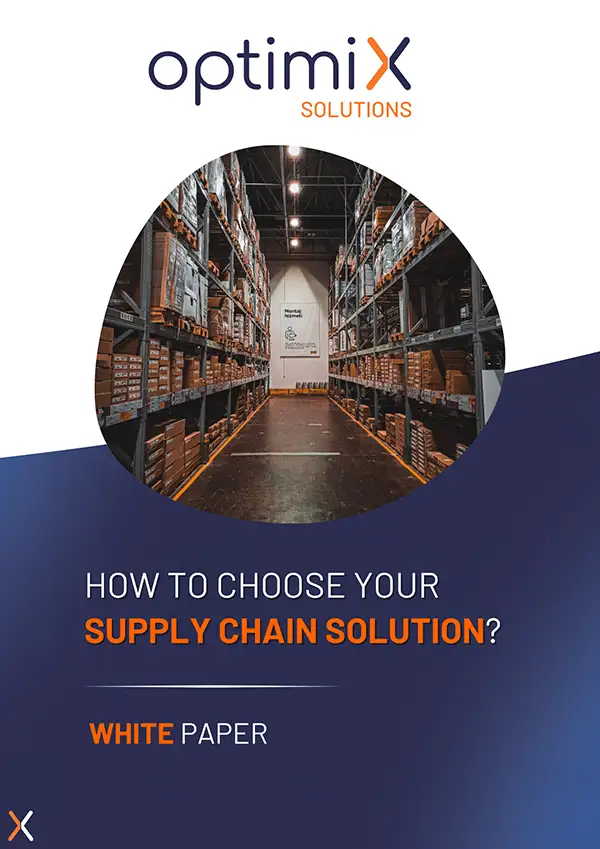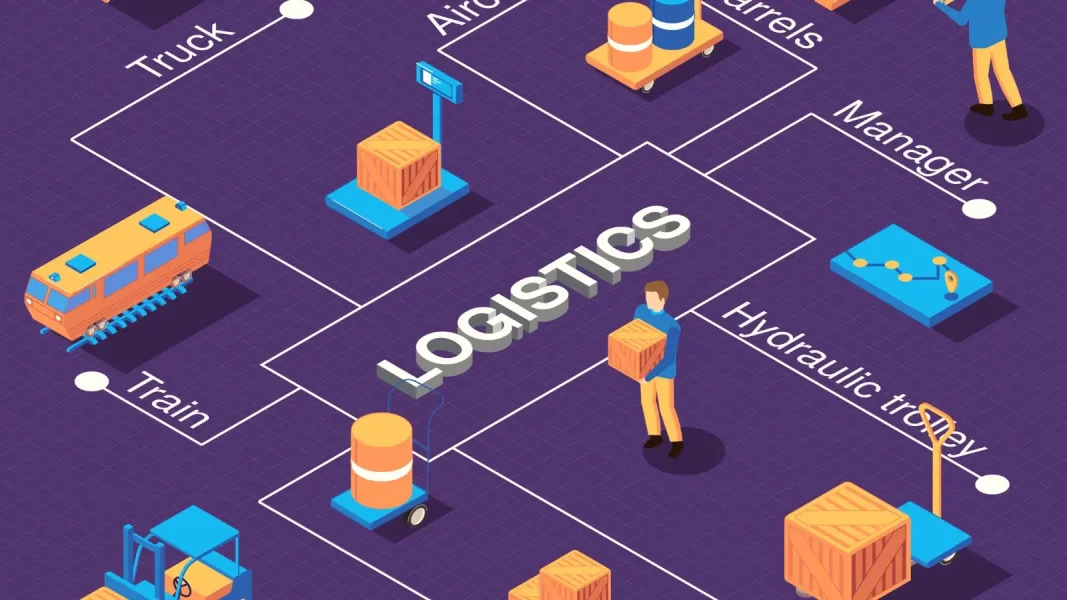Inaccurate demand forecasts can be costly: stock-outs, overstocking, lost sales and customer dissatisfaction.
Faced with these challenges, optimizing the efficiency and ROI of your supply chain requires accurate and reliable demand forecasting. Accurate demand forecasting becomes a strategic lever for adjusting stock levels, guaranteeing product availability and reducing costs linked to estimation discrepancies.
Artificial intelligence is radically transforming the way companies approach this issue. Thanks to machine learning and neural networks, it is now possible to model purchasing behavior, detect weak signals and react more quickly to market variations.
What concrete benefits do these technologies bring to demand anticipation? How can they be supported by on AI-enhanced demand forecasting tools to achieve their objectives?
The case study from Buffalo Grill perfectly illustrates how AI can be used to optimize the management of products with limited shelf life (DLC) and reduce food waste through better anticipation of demand.
By leveraging APS XFR- Optimix Forecast and Replenishment solutionsolution, Buffalo Grill has modernized itssupply chain, replacing an aging manual system with an artificial intelligence tool capable of accurately forecasting fresh, frozen and non-food product requirements.
In this article, find out how AI can help you refine your forecasts.
Demand forecasting: from statistical approaches to artificial intelligence
Thanks to forecasts, retailers can also better plan supplies and production with manufacturers, who have more scope to anticipate resource and raw material requirements.
Forecasting also helps to optimize logistics flows. It helps to plan transport and operations efficiently, and to reduce the associated logistics costs. As you can see, demand forecasting is essential to retail decision-making.
In an environment where seasonal variations, promotions and vacation periods influence demand, planning is becoming increasingly complicated. The integration of AI capable of cross-referencing a large amount of data with little historical data, all in a single model, is becoming indispensable. This advance now makes it possible to to obtain sales and demand forecasts forecasts.
Traditional approaches are based on the analysis of historical data and the application of statistical models, often calibrated independently for each product.
However, these methods have proved ineffective for forecasting new products with little history, and for processing a large number of data simultaneously, of varying typology.
A machine learning model can overcome these limitations. To make predictions on new products with little historical data, it relies (implicitly) on products of the same typology that it already “knows” and for which it has more historical data. The model can be reused if it has been trained with data from the same typology.
Ideally, the time series should be similar for good results. Machine learning models can be trained on large volumes of data and on very different time series.
| Criteria | Classical statistical approach | Machine Learning approach |
|---|---|---|
| Data history | Substantial history to calibrate parameters | Forecasting possible with little history: product launches, lack of history |
| Number and type of data | Input data limited in number and type | Able to cross-reference a wide range of data: Promotions, school vacations, customer reviews, weather |
| Processing complexity | Complexity of handling seasonality, uptrends and downtrends simultaneously | One model to handle everything |
A concrete example of AI applied to demand forecasting: THE BUFFALO GRILL CASE
At Buffalo Grill, for example, the adoption of our AI-enhanced Forecast XFR solution has optimized sales seasonality planning. Thanks to more accurate demand forecasting, the company has moved from intuition-based management to a reliable, data-driven analytical approach.
The XFR- Optimix Forecast adsn Replenishment tool draws on several years of historical data, enabling it to accurately model weekly and annual seasonality, while integrating the impact of exogenous factors such as the weather or school vacations.
The chain has regained control over optimal product availability, and can further increase the freshness of menu items. What’s more, by eliminating the time-consuming tasks associated with manual forecasting, teams can concentrate on higher value-added activities, such as negotiating with their suppliers and managing product quality.
Decision tree models (light GBM) for greater accuracy
Data used by AI to forecast demand
When it comes to forecasting, one of the main advantages of AI lies in its ability to analyze data from multiple sources :
- Sales history
- External factors such as weather, economic events, …
- Real-time competitor activity
- Customer browsing data and online searches
- Trends and conversations on social networks
While traditional approaches rely mainly on historical sales data, the integration of other data sets gives a finer, more nuanced view of forecasting.
Take weather data, for example. It’s obvious that they influence demand. For example, if the summer is gloomy and rainy, sales of barbecues will be lower than if the weather is warm and sunny.
Similarly, economic and geopolitical events have an impact on demand. High inflation reduces demand, particularly for “non-essential” products. Conversely, a general increase in the minimum wage and low wages would probably have the opposite effect.
The integration of competitive data also helps to refine the forecast. Indeed, the opening of new competitor stores or changes in their assortment have an impact on demand at your points of sale. Finally, web and social listening data are also signals you can take into account to refine your demand forecast.
Thanks to this multidimensional approach, AI delivers far more accurate forecasts It cross-references different data sources to detect complex correlations that influence demand, enabling more accurate and responsive forecasts.
But AI doesn’t just predict. It adapts in real time, offering retailers immediate adjustment opportunities.
Developed by Microsoft, decision tree models are proving to be particularly effective tools for identifying the factors influencing consumption and adjusting stock levels accordingly.
These models enable data to be segmented according to multiple variables, such as seasonality, promotions, weather or consumer trends. For example, a decision tree can learn that rising temperatures lead to higher sales of cold drinks, and dynamically adjust forecasts accordingly.
For Buffalo Grill, these models analyze the impact of public holidays, local events or customer trends on the consumption of products with limited shelf life (DLC).
Advantages and benefits of AI to optimize your forecasts
More accurate, real-time and adaptive forecasts
Forecasts based on deep learning models are more accurate. A forecast that proves to be accurate a posteriori facilitates decision-making by supply chain teams. Some recent models are even capable of framing their forecast within a confidence interval.
So you can rely on an extremely reliable and reassuring demand forecast to optimize your supply chain operations: optimize inventories, plan operations, optimize logistics flows, etc.
Thanks to this more accurate forecast, your logistics teams gain peace of mind, better anticipate needs and optimize every link in the chain. They can reduce costs and improve customer satisfaction.
What’s more, AI is distinguished by its ability ability to process data in real time. Unlike static models, its algorithms react immediately to changes in datasets, adjusting forecasts according to the latest information available.
This reactivity makes it possible to anticipate variations in demand that would have been impossible to foresee using conventional methods. Thanks to this flexibility, companies can quickly adjust their operations and inventories.
Integrating AI into demand forecasting delivers significant benefits at all levels of the supply chain. Companies adopting these solutions have seen a significant improvement in the accuracy of their forecasts, and a costs.
Buffalo Grill’s experience shows that well-integrated AI reduces the breakage rate of perishable products by 15%, by reducing overstocking through better anticipation of sales.
More accurate forecasts mean lower safety stocks overall. However, it can happen that a given AI model does not perform well on certain products. In this case, the XFR solution applies a best-fit method to select the best model (statistical or machine learning).
If no model performs well, the safety stock calculated by Optimix is simply higher to compensate for this uncertainty. This is particularly the case for products with “erratic” sales for which there is no explanatory rational.
The quality of incoming data
Yes, AI makes it possible to cross different data sets, and even large volumes of data, to make the forecast more complete and reliable.
With deep learning, data quantity is no longer an issue. However, the question of data quality remains. If your forecast is based on a multitude of demand influencing factors, the slightest error in the incoming data sets can distort the forecast. Incorrect, missing or out-of-date data can mislead the solution.
To ensure that your forecast remains reliable, you need to optimize data flow at all levels:
- Collect and centralize data from a variety of sources
- Cleaning and preparation of data to ensure quality and consistency
- Integrating external data with internal data
Transparent forecasts
Whichever demand forecasting method you use, it weighs heavily in your teams’ supply chain analyses and decision-making. Because, behind the forecast, your staff will be making projections. And these projections serve as the basis for making decisions that will be implemented at operational level.
However powerful it may be, AI is not responsible for decisions. Responsibility remains human. If a mistake is made, it’s the decision-maker who must take responsibility. It is therefore important that AI predictions are understandable and justifiable if they are to be adopted.
One of the challenges is to maintain traceability traceability of AI-proposed forecasts. What data did it use? What path led to this version of the forecast? To avoid a “black box effect”, decision-makers need to be able to retrace the forecast’s path. The fact that a solution guarantees this traceability is an additional guarantee of confidence for its users.
The adoption of AI in demand forecasting represents a major step forward for companies seeking to improve their competitiveness.
Thanks to advanced Machine Learning models, companies are able to make highly accurate sales and demand forecasts, across a large number of products and/or sales channels, enabling them to reduce inventory and breakage rates, while increasing product availability.
The example of Buffalo Grill is a perfect illustration of how a well-implemented AI solution can transform the management of SLED stocks by reducing waste, limiting overstocking and guaranteeing better product availability.
As technologies evolve and companies integrate increasingly sophisticated solutions, AI will become a essential element to ensure optimal management supply chain management and sustainable growth.
Why continue to depend on uncertain forecasts when AI enables you to anticipate with precision? Opt for an AI-based solution like Optimix XFR.
Our solution relies on Machine and Deep Learning technology to enhance forecast accuracy.
Do you have a project in mind? Why not talk to one of our experts?








